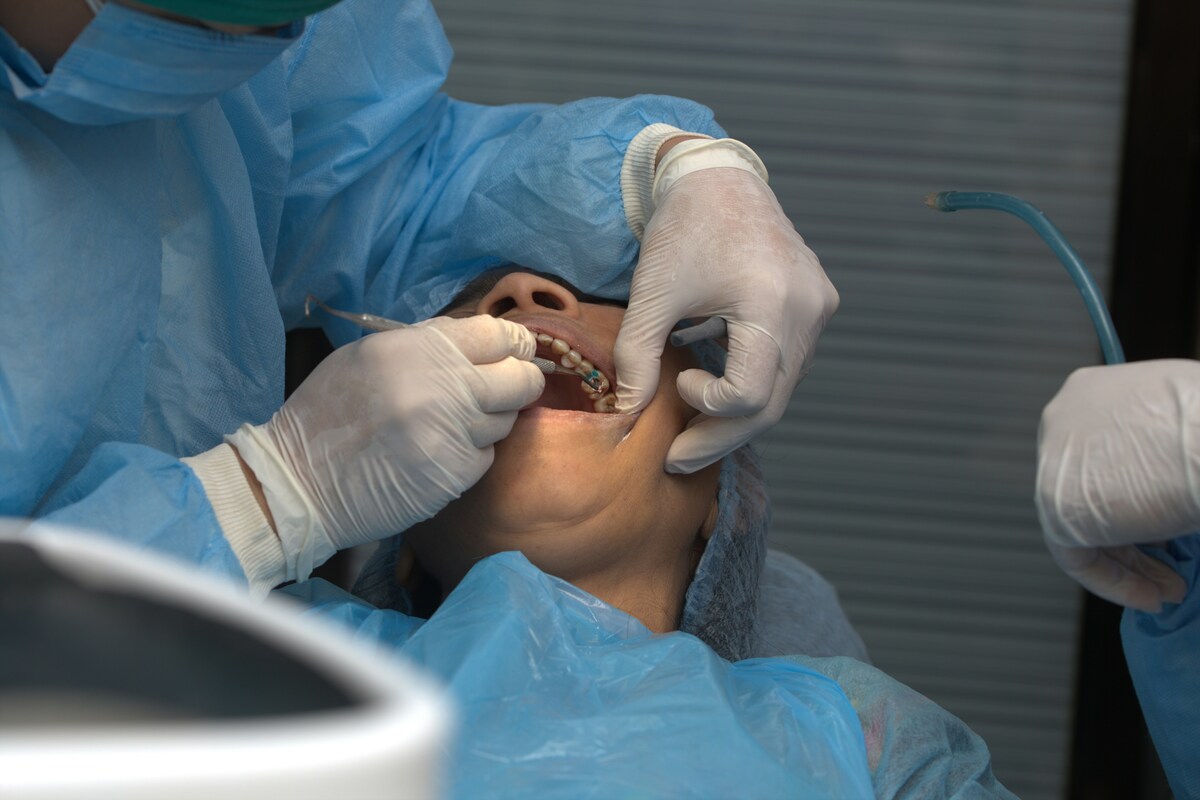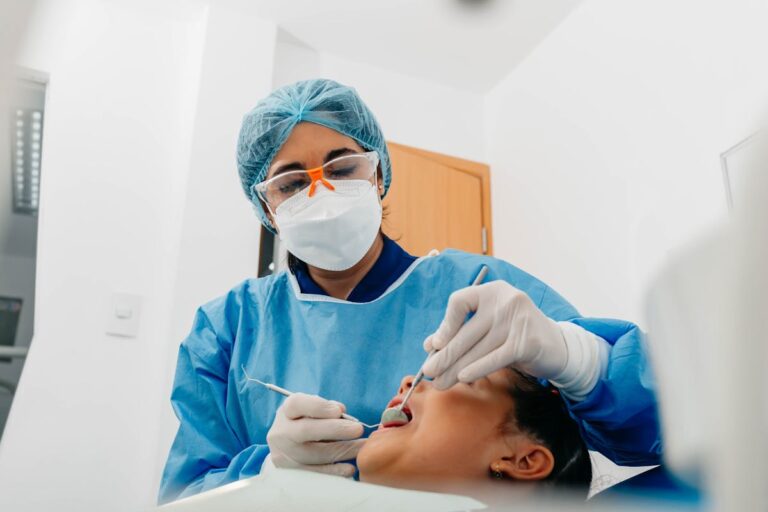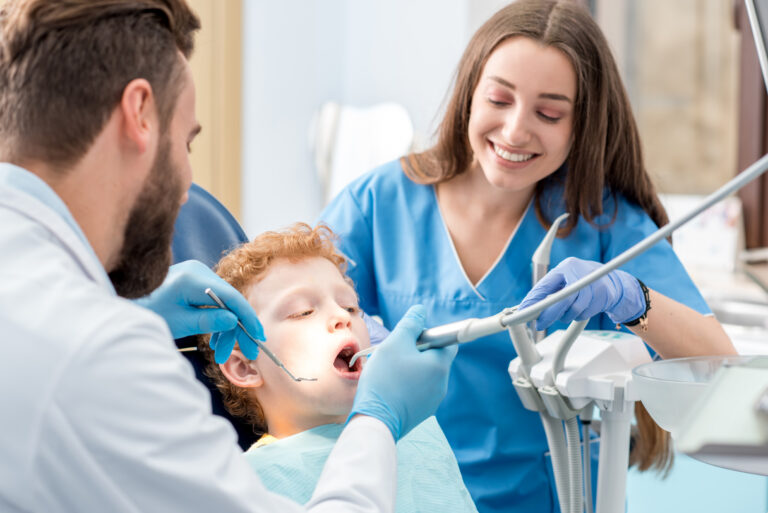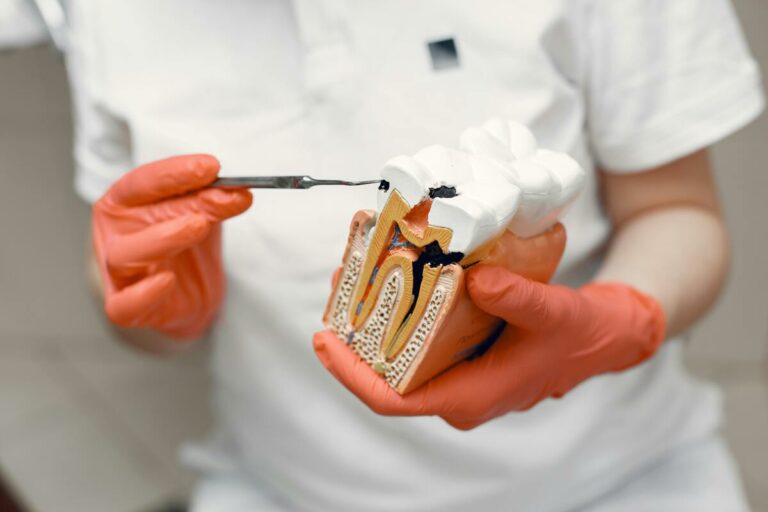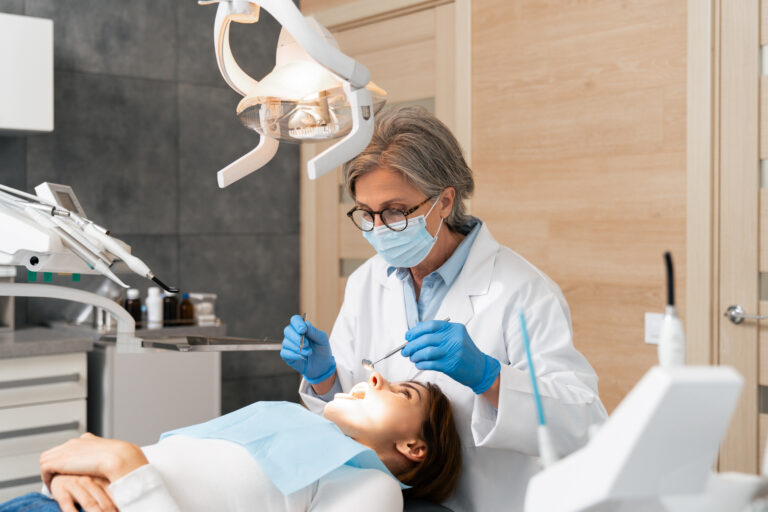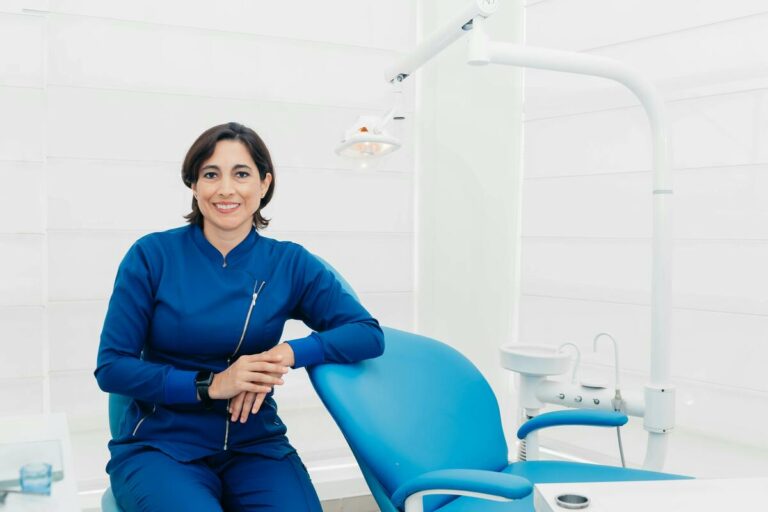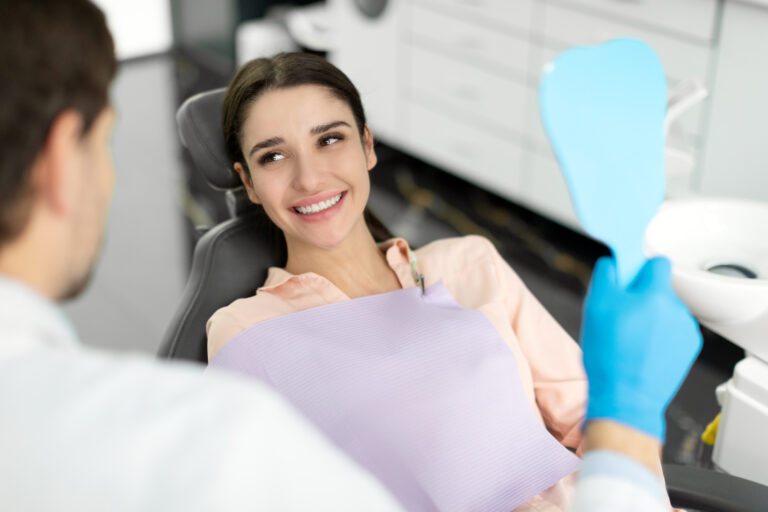Sedation Dentistry Options in Princeton: Solutions for Dental Anxiety
In Princeton, sedation dentistry offers a clinical solution for individuals experiencing dental anxiety, presenting effective methods to guarantee a stress-free experience. Various sedation options are available, each catering to different levels of patient anxiety and procedural requirements. From oral sedation to intravenous techniques, these methods provide tailored relaxation, enhancing patient compliance and promoting ideal dental care. Understanding which option suits your needs can greatly impact your dental experience and overall oral health.
Understanding Dental Anxiety and Its Impact
Dental anxiety, a prevalent psychological phenomenon, considerably impacts individuals’ willingness to seek dental care. The etiology of this anxiety can be multifaceted, encompassing fear of pain, perceived loss of control, embarrassment, or negative past experiences. These causes of anxiety lead to avoidance behaviors, resulting in deteriorating oral health and increased treatment complexity. The physiological responses, such as increased heart rate and sweating, further exacerbate stress, creating a cycle of dental avoidance. Effective management of stress is essential in mitigating dental anxiety. Techniques such as cognitive-behavioral therapy, relaxation strategies, and patient education aim to desensitize fear responses and promote a sense of control. Understanding these mechanisms is critical for dental professionals to facilitate a more favorable environment for patient engagement with dental care.
What Is Sedation Dentistry?
Sedation dentistry encompasses a range of pharmacological interventions designed to alleviate anxiety and discomfort during dental procedures. It includes various types of sedation such as nitrous oxide, oral sedatives, and intravenous sedation, each offering different levels of consciousness and control. The primary benefits of sedation in dentistry include enhanced patient comfort, reduced anxiety, and facilitation of complex or lengthy dental treatments.
Types of Sedation
Within the domain of sedation dentistry, various types of sedation are employed to alleviate patient anxiety and discomfort during dental procedures. Oral sedation involves administering a prescribed medication, typically in pill form, prior to the appointment to induce a state of relaxation. This method allows patients to remain conscious but considerably relaxed, facilitating smoother procedural experiences. Another prevalent technique is nitrous oxide sedation, commonly known as “laughing gas.” This sedative is inhaled through a mask placed over the nose, providing rapid onset of calming effects. Nitrous oxide is particularly advantageous due to its ease of administration and swift recovery time, allowing patients to resume normal activities shortly after treatment. Both methods are widely used to enhance patient comfort and cooperation.
Benefits of Sedation
One of the primary advantages of sedation dentistry lies in its ability to greatly reduce anxiety and discomfort for patients undergoing dental procedures. By employing various sedation techniques, dental professionals can cater to the specific needs of each patient, enhancing overall patient comfort. Techniques such as oral sedation, intravenous sedation, and inhalation sedation are meticulously chosen based on the patient’s anxiety levels and the procedure’s complexity. These methods facilitate a tranquil state, enabling patients to remain relaxed and still during treatment. Consequently, sedation not only minimizes psychological distress but also allows for more efficient procedural execution. Additionally, sedation dentistry is beneficial for patients with low pain thresholds, sensitive gag reflexes, or those requiring extensive dental work, thereby optimizing their clinical experience.
Benefits of Sedation Dentistry
Sedation dentistry offers significant therapeutic benefits, particularly in reducing anxiety levels in patients who experience dental phobia. By facilitating a comfortable dental experience, sedation techniques enable patients to undergo necessary procedures without the psychological distress typically associated with dental visits. Additionally, sedation is instrumental in minimizing the gag reflex, thereby enhancing the efficiency and effectiveness of dental interventions.
Reduced Anxiety Levels
Often, patients experience a significant reduction in anxiety levels when undergoing dental procedures with the aid of sedation dentistry. This practice effectively utilizes relaxation techniques to mitigate anxiety triggers commonly associated with dental treatments. Sedation dentistry employs pharmacological agents to induce a state of calmness, allowing the nervous system to decouple from stress responses. By targeting the physiological pathways linked to anxiety, these agents prevent the cascade of stress hormones that typically heighten patient apprehension. In clinical settings, sedation dentistry is instrumental in diminishing anticipatory anxiety, which often exacerbates discomfort prior to procedures. The strategic application of sedation disrupts the cycle of fear and avoidance behavior, offering an evidence-based solution to anxiety management in dental care contexts.
Comfortable Dental Experience
While undergoing dental procedures, patients can experience a particularly enhanced level of comfort through the implementation of sedation dentistry. This approach greatly augments patient comfort by employing pharmacological agents to induce a state of relaxation. Sedation dentistry effectively addresses anxiety relief, which is pivotal for patients with heightened dental apprehension. By utilizing varying levels of sedation, ranging from minimal to deep sedation, practitioners can tailor the experience to meet individual patient needs, ensuring a calm and stress-free environment. This method facilitates not only psychological ease but also physiological relaxation, thereby optimizing procedural outcomes. The overarching benefit of sedation dentistry lies in its capacity to transform potentially distressing experiences into manageable ones, thereby enhancing overall patient satisfaction and compliance with dental care.
Minimizing Gag Reflex
A notable benefit of sedation dentistry is its efficacy in minimizing the gag reflex, which can be a significant obstacle during dental procedures. The gag reflex, a defense mechanism, is triggered when foreign objects touch the soft palate or throat, often disrupting dental treatments. Sedation techniques, such as nitrous oxide or oral sedatives, play a critical role in reducing this reflex by calming the patient’s nervous system. This relaxation allows dental professionals to perform procedures with greater precision and efficiency. Additionally, sedation enhances patient cooperation and comfort, leading to improved outcomes. The dampening of sensory perception not only alleviates anxiety but also facilitates the completion of intricate dental work without the interruptions caused by an overactive gag reflex.
Types of Sedation Available in Princeton
Sedation dentistry in Princeton encompasses a variety of techniques designed to alleviate patient anxiety and discomfort during dental procedures. Among the available modalities, oral sedation and nitrous oxide are prominent. Oral sedation involves administering sedative medications orally to achieve a state of relaxation. Typically, benzodiazepines are prescribed, which facilitate anxiolysis and amnesia, ensuring patients remain calm and oblivious to the procedural intricacies. Conversely, nitrous oxide, commonly referred to as “laughing gas,” is an inhaled sedative agent. It induces a state of euphoria and mild analgesia, allowing patients to tolerate dental interventions with minimal distress. The rapid onset and reversible effects of nitrous oxide make it a preferred choice for many practitioners, offering a controlled and safe sedation option.
How Oral Sedation Works
Oral sedation, as previously mentioned, involves the administration of sedative medications to facilitate patient relaxation during dental procedures. This method typically utilizes benzodiazepines, such as diazepam or triazolam, which are administered orally prior to the commencement of treatment. The pharmacological action of these agents targets the central nervous system, inducing anxiolytic and sedative effects, thereby enhancing the overall patient experience by minimizing apprehension. Dosage is meticulously calibrated to guarantee adequate sedation, while maintaining patient responsiveness. The onset of oral sedation effects is gradual, typically occurring within 30 to 60 minutes post-ingestion, allowing for a controlled and predictable sedation level. Monitoring of essential signs is critical throughout the procedure to guarantee patient safety and effective sedation management.
The Role of Nitrous Oxide in Reducing Anxiety
While oral sedation provides a significant means of alleviating dental anxiety, nitrous oxide plays a complementary role in enhancing patient comfort during dental procedures. Known for its rapid onset and minimal side effects, nitrous oxide, often referred to as “laughing gas,” offers an effective anxiolytic alternative. Its effectiveness stems from its ability to induce a state of relaxation without impairing consciousness, allowing patients to remain responsive yet calm. Clinical studies report positive patient experiences, highlighting reduced anxiety and discomfort during dental interventions. The administration involves a controlled inhalation of the gas, with its effects dissipating quickly post-procedure, facilitating a swift recovery. This makes nitrous oxide a practical choice for patients seeking anxiety relief with minimal disruption to daily activities.
Intravenous (IV) Sedation Explained
Intravenous (IV) sedation represents a highly controlled method of managing dental anxiety that involves administering sedative medications directly into the bloodstream. This approach guarantees rapid onset and precise titration of sedative levels, allowing dental professionals to adjust the sedation depth swiftly according to patient needs. The IV sedation process requires the insertion of a small catheter into a vein, typically in the arm or hand, through which the sedative is delivered.
One of the primary IV sedation benefits includes its ability to maintain patient consciousness while considerably reducing anxiety and discomfort during procedures. Patients often experience minimal memory of the procedure, enhancing overall satisfaction. Additionally, the effects dissipate relatively quickly post-treatment, facilitating a smoother recovery phase compared to other sedation modalities.
Selecting the Right Sedation Option for You
When considering the ideal sedation dentistry option, how does one determine the most suitable choice for individual needs? The selection process involves evaluating personal comfort and patient preferences, essential for effective anxiety management. Dentists must assess the patient’s medical history, anxiety levels, and previous experiences with sedation. Oral sedation may suit those seeking minimal intervention, whereas nitrous oxide offers quick recovery for those prioritizing immediate post-procedure activities. Intravenous (IV) sedation is often recommended for patients with severe dental phobias or those undergoing extensive procedures, providing deeper sedation. A thorough discussion between the patient and dental professional is imperative to align sedation methods with the patient’s comfort thresholds and procedural demands, ensuring a tailored, anxiety-reducing approach to dental care.
Preparing for a Sedation Dentistry Appointment
A thorough understanding of the chosen sedation method allows patients to adequately prepare for their upcoming dental appointment. This preparation involves adhering to an appointment checklist, which typically includes pre-appointment dietary restrictions, transportation arrangements, and post-procedure care instructions. Patients are advised to abstain from food and drink for a specified period prior to the procedure, according to the sedation type used. Transportation arrangements are essential as sedatives impair the ability to drive post-procedure. Additionally, patient expectations should encompass anticipated levels of consciousness and recovery time, tailored to the sedation method selected. Understanding these elements guarantees efficient procedural flow and ideal patient outcomes, minimizing anxiety and maximizing readiness for the sedation dentistry experience in Princeton.
Frequently Asked Questions
Are There Any Natural Alternatives to Sedation Dentistry?
In addressing the current question, individuals may explore herbal remedies such as valerian root or chamomile, which possess calming properties. Additionally, mindfulness techniques, including meditation and deep-breathing exercises, can effectively reduce dental anxiety without pharmacological intervention.
How Does Sedation Dentistry Impact Recovery Time?
Sedation dentistry can extend recovery time due to residual sedative effects. However, adherence to safety protocols and continuous patient monitoring mitigate risks, ensuring patient safety and facilitating a controlled recovery environment post-procedure, minimizing potential complications.
Is Sedation Dentistry Covered by Dental Insurance Plans?
Dental insurance coverage for sedation dentistry varies considerably based on individual policy limitations. Most plans cover basic procedures; however, sedation often incurs additional costs that may not be fully reimbursed, necessitating a thorough review of specific policy details.
Can Children Undergo Sedation Dentistry Safely?
The safety of sedation dentistry for children requires adherence to established safety guidelines within pediatric dentistry. Proper protocols, including appropriate dosage and monitoring, guarantee minimized risks, allowing children to undergo procedures safely when performed by qualified professionals.
Are There Any Dietary Restrictions After Sedation Dentistry?
Post sedation diet guidelines suggest starting with clear liquids, gradually progressing to soft foods as tolerated. Sedation recovery guidelines emphasize avoiding alcohol, caffeine, and spicy foods immediately after the procedure to prevent complications and guarantee safe recovery.
